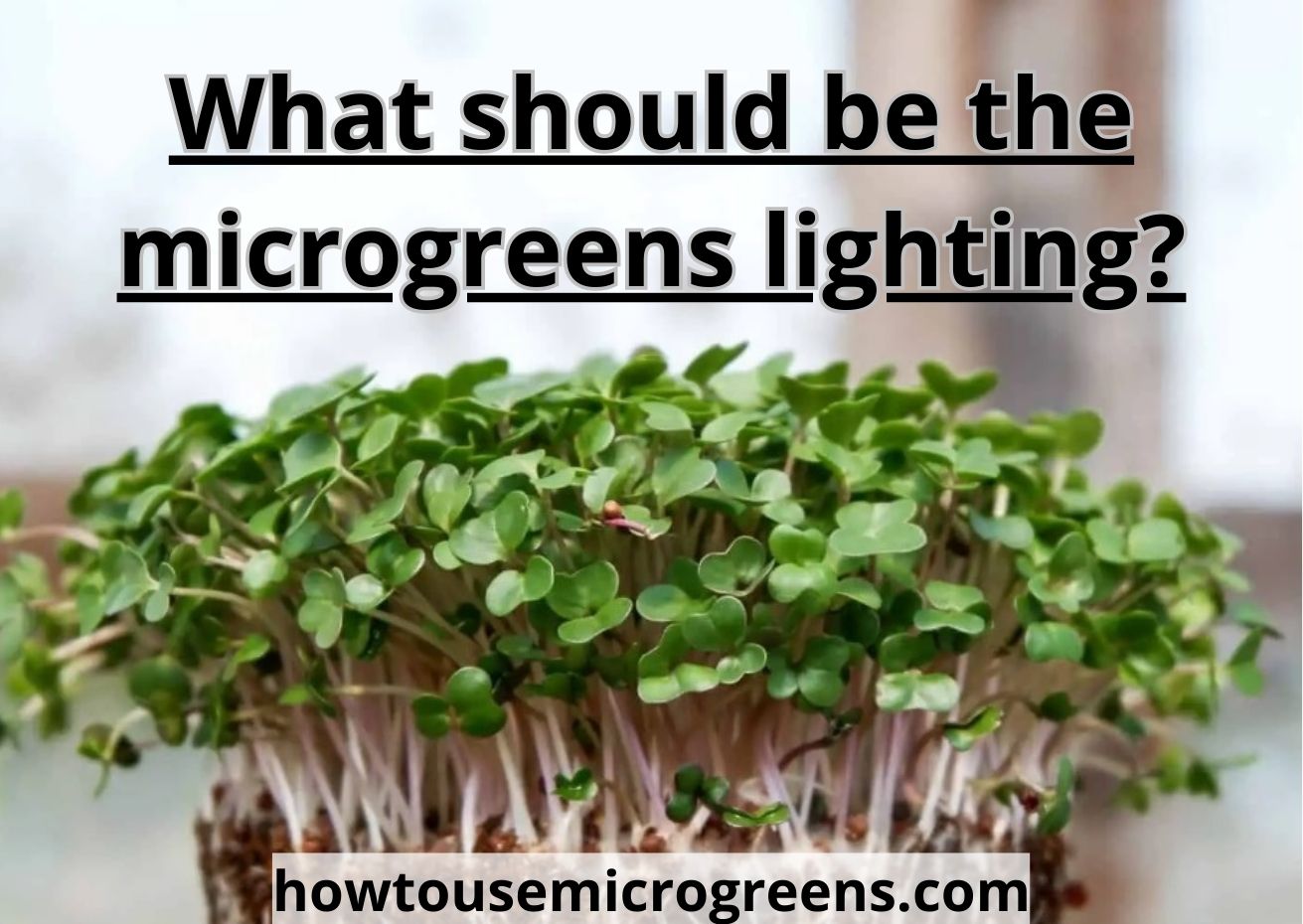Microgreens have a significant positive impact on health due to their rich vitamin, mineral, and antioxidant content.
To ensure proper growth and development of plant production, selecting the right lighting system is crucial. Consider the following factors when choosing a lighting system for your microgreens:
- Light intensity: To grow microgreens successfully or other plants, growers typically opt for either fluorescent or LED lights. While fluorescent lights are a cost-effective and reliable option, LED bulb shop lights offer higher energy potency and longer-lasting performance, albeit at a higher price point.
- The color appearance of light, known as color temperature, has an impact on the growth of microgreens. For optimal growth, microgreens do well with a cool-white light that has a color temperature of 5000-6500K, as this provides the right amount of blue spectrum light.
- The amount of heat produced and electricity consumed by the light you use depends on its wattage. It is recommended to use a wattage of approximately 25-30 watts per square foot for microgreens.
The growth of microgreens is affected by the distance between them and the light source. Depending on the growth stage of the microgreens and the type of light used, it is recommended to position the light 3-6 inches above the plants.
To sum up, microgreens need an abundant supply of light for optimal growth and development. An ideal lighting setup consists of cool-white fluorescent or LEDs with a color temperature between 5000-6500K and a wattage of approximately 25-30 watts per square foot.
It is ideal to position the lights about 3-6 inches away from the plants. Also, it can be blue light, red light spectrums, etc.
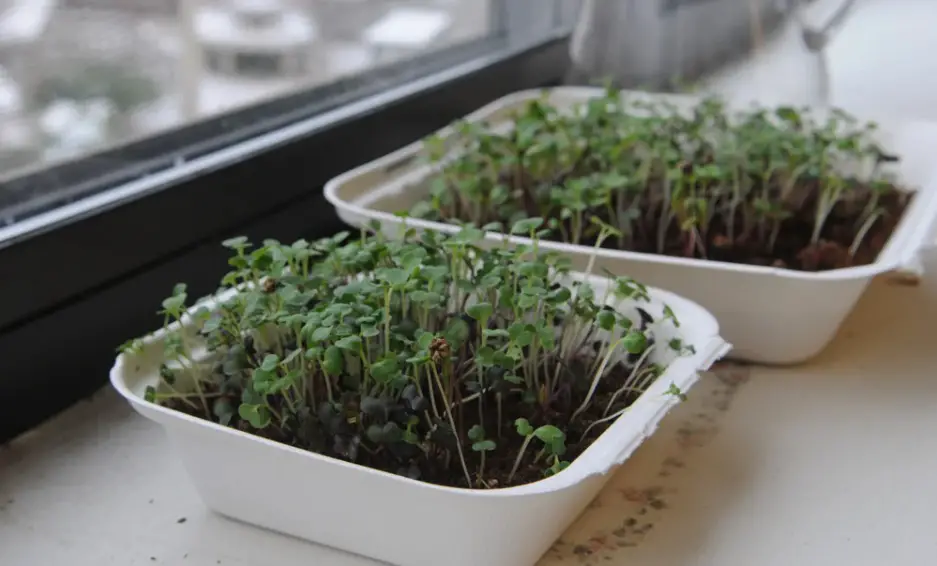
Contents
- 1 Adjusting lights for microgreens
- 2 Lighting options for growing microgreens
- 3 What is the distance between my lights and microgreens?
- 4 What is the required duration of light hours for microgreens?
- 5 How is the light spectrum related to the growth of microgreens?
- 6 Which lights are most suitable for growing microgreens?
- 7 What is the required wattage for growing microgreens?
- 8 T8 fluorescent light source
- 9 At what time should I subject microgreens to light?
- 10 FAQ
- 11 Conclusions
Adjusting lights for microgreens
A grow’s light system can help microgreens flourish and below is a detailed plan for establishing one that will work effectively.
- Choose for your grow light intensity: Opt for energy-efficient LED lights, which are highly preferred for growing microgreens as they provide the requisite spectrum of light for plant growth. You can select either a full-spectrum or specialized light source that focuses on certain wavelengths.
- Find out the dimensions of your cultivation space, as they will determine the required amount of grow lights. It is recommended to use 25-30 watts of grow lights per each square foot of growing area.
- Hang your grow lights at a distance of 3-6 inches above your microgreens to control their level of illumination. The appropriate distance will rely on the kind of grow’s light and the maturity level of your microgreens.
- Arrange a timekeeper: Schedule your grow lights to function for 12-16 hours daily, taking into consideration the type of microgreens you are cultivating. The majority of microgreens demand around 14-16 hours of light every day.
- Keep track of your plants: Watch over your microgreens and modify the positioning of your grow lights as needed. If your plants are reaching out for the light, bring the light source nearer. If they are overheating, shift the lights farther away.
- Make sure your grow lights are properly maintained by keeping them clean and free from dust and debris. If you notice any bulbs that are not functioning properly, be sure to replace them promptly.
Creating a grow’s light structure for your microgreens is a seamless process that enhances their development and productivity to a great extent.

Lighting options for growing microgreens
Here are some lighting options.
Natural light
Although this source of light is the cheapest and most easily accessible, its brightness levels may not be constant and can be influenced by variations in seasons.
Fluorescent lights
Though reasonably priced and power-saving, these lights may not suffice for cultivating particular types of microgreens, despite offering a steady stream of brightness suitable for most.
LED shop lights
The popularity of these LED strip grow lights used for indoor growing is on the rise due to their energy potency, ability to offer consistent light levels, and adaptability to cater to different stages in the growth of microgreens or other plants. Most LED strip lights are suitable for cultivation.
High-intensity discharge lights
These lights offer the highest intensity of light for plant growth, but come with a steep price tag and generate significant heat, making them unsuitable for certain growing configurations.
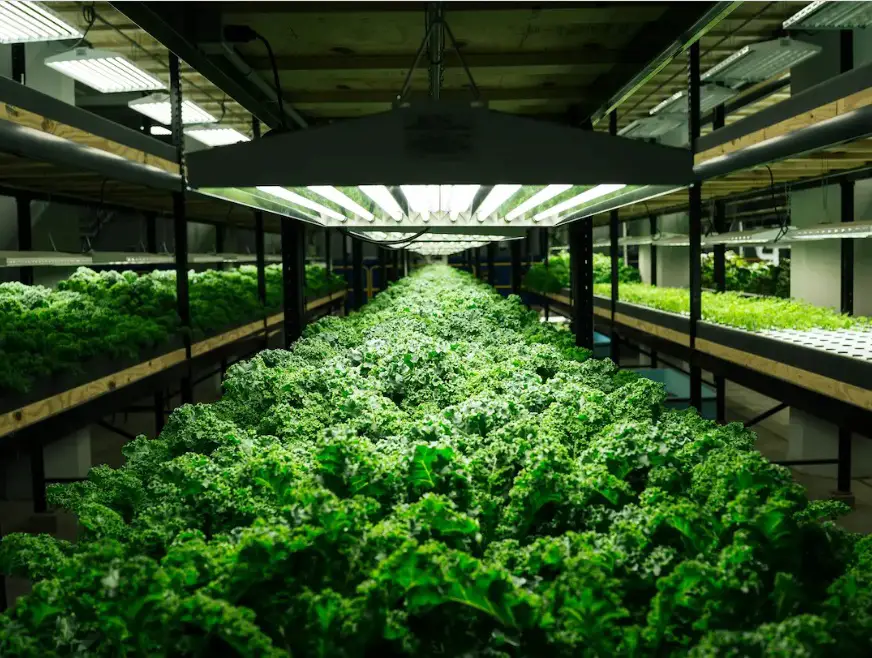
What is the distance between my lights and microgreens?
To ensure that microgreens receive enough light without being burnt, it is advised to place grow lights approximately 3-6 inches above the top of the plants. It is important to consider the intensity of the light and the specific type of growing microgreens.
Research or professional advice should be sought before determining the optimal distance between the lights and microgreens. The height of the grow’s lights should be modified proportionally to the increasing grow microgreens.
Placing the microgreens directly under the center of the grow microgreens light helps distribute light evenly across all plants.
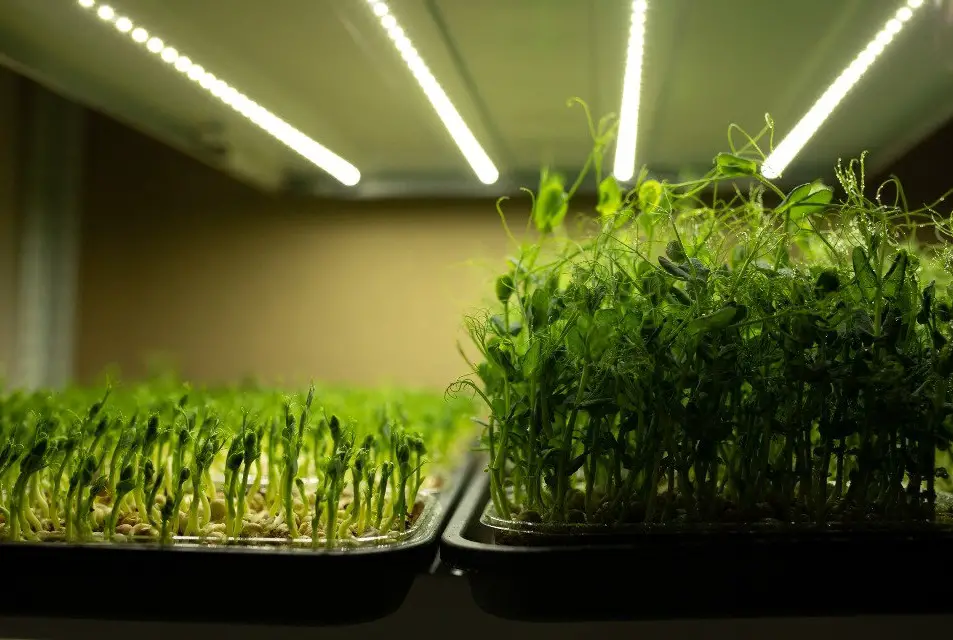
What is the required duration of light hours for microgreens?
To ensure healthy grow microgreens and development, you need to determine how many hours it needs lighting, it is recommended to give them a steady 10-12 hours of lighting daily, either from natural sunlight or artificial grow’s lights.
When using grow lights, it is crucial to position them at the proper distance from the plants to avoid any damage caused by burning. The distance may vary depending on the wattage and type of the grow microgreens lights.
Monitoring the temperature of the grow microgreens area is crucial as high temperatures can harm the microgreens. The ideal temperature range for optimal growth is 64-75 °F (18-24 °C).
Additionally, it is necessary to water the microgreens regularly to maintain soil moisture without overwatering, which can lead to root rot and hinder growth. A good way to ensure appropriate watering is to wait until the topsoil feels dry to the touch.

The growth and development of microgreens are greatly affected by the light spectrum, as various colors of light spectrums with distinct wavelengths elicit diverse responses in plants. For instance, in light spectrums, blue light is vital for photosynthesis, which enhances plant growth, whereas red light is essential for flower and fruit development.
It’s important to note that the growth and quality of microgreens can be greatly affected by the strength and length of time they are exposed to light. By understanding the specific light spectrum and exposure duration needed for various microgreens types, optimal growth, and yield can be achieved.
Furthermore, the size and color of microgreens are influenced by the intensity of the light spectrum. Greater light spectrum intensity can encourage faster growth and greener leaves, but shorter stems may be a result. Conversely, lower light spectrum intensity may produce paler leaves and longer stems.
With the use of artificial lighting such as LED or fluorescent lights, microgreens can receive consistent light exposure, regardless of sunlight availability. Different types of LED lighting can also be utilized to control the light spectrum and create customized growth conditions.
In the end, understanding how the entire complete light spectrum affects the growth of microgreens and other plants can help growers improve their growth conditions and increase their crop yields and quality.

Which lights are most suitable for growing microgreens?
LED lights are the favored choice for cultivating microgreens due to their energy-saving properties and lower heat emission, which minimizes the likelihood of microgreen heat damage.
T5 fluorescent lights are a cost-effective choice for cultivating microgreens, as they generate light direction that safeguards the plants from heat-induced harm.
CFL Grow Lights: These are compact fluorescent bulbs that emit the full spectrum of light needed for microgreens to grow.
High-pressure sodium lights, commonly known as HPS lights, are primarily utilized in commercial environments or for cultivating substantial vegetation. They discharge powerful illumination that stimulates the plants’ development, yet they can also generate excessive heat.
Growing microgreens is best done using natural light, particularly if you have a window facing south that receives ample sunlight. However, it’s important to ensure that the light’s strength and duration are adequate.
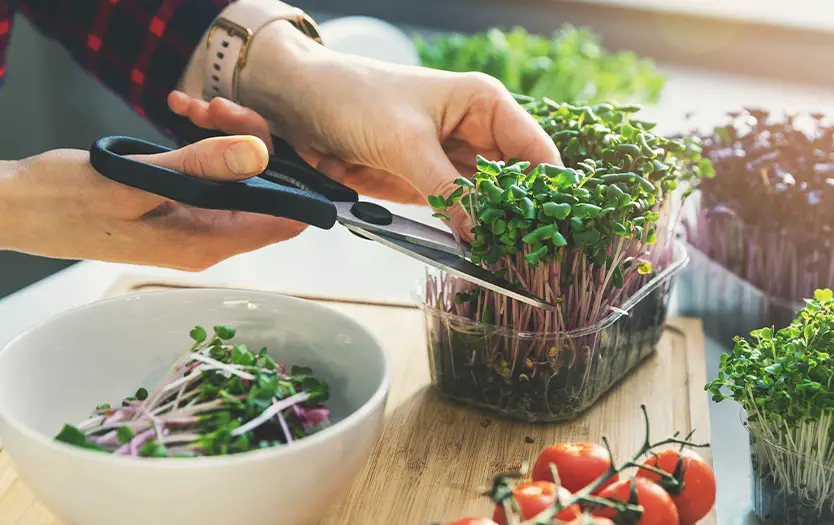
What is the required wattage for growing microgreens?
The appropriate amount of wattage necessary to cultivate microgreens fluctuates depending on factors such as the strain of microgreens, the scope of cultivation space, and the type of illumination you employ. Nevertheless, a general guideline to ensure effective cultivation and productivity is to utilize a minimum of 20-30 watts of LED lighting per square foot of cultivation area.
If you have a 2-square-foot growing area, it is recommended to use 40-60 watts of LED lighting. Selecting the appropriate spectrum of LED lighting is essential for microgreens, as various spectrums have unique impacts on plant growth. Generally, red and blue spectrums are the most effective for growing and ensuring high yields.
T8 fluorescent light source
A T8 fluorescent light is a type of lighting tube that uses fluorescent technology to produce light and is 1 inch in diameter. These tubes are commonly used in commercial and residential lighting fixtures, such as office spaces, warehouses, schools, and garages.
T8 fluorescent are known for their energy potency, longer lifespan, and brightness compared to traditional incandescent bulbs. They come in a variety of color temperatures, ranging from warm to cool, making them suitable for various applications.

Moreover, T8 fluorescent lamps have high brightness levels, can be easily installed and replaced, and are compatible with electronic ballasts, which increases their efficient use of energy even further. They also produce less heat than incandescent bulbs, which makes them safer to use and reduces cooling costs.
T8 fluorescent grow’s lights are also environmentally friendly, as they contain less mercury than older fluorescent technologies and can be recycled. Overall, T8 fluorescents are a popular lighting choice due to their durability, brightness, energy efficiency, and versatility.
At what time should I subject microgreens to light?
Most microgreens require light to germinate and grow, so it is recommended to expose them to light as soon as they have sprouted. Place them in a well-lit area or under grow lights for 10-12 hours daily. Ensure that they are exposed to indirect light and not harsh direct sunlight, as it can damage delicate sprouts.
Correct lighting duration and intensity are crucial for the wellbeing and progress of the microgreens, hence it is advised to seek guidance from a horticulturist for more precise information on lighting specifications for distinct microgreen kinds.
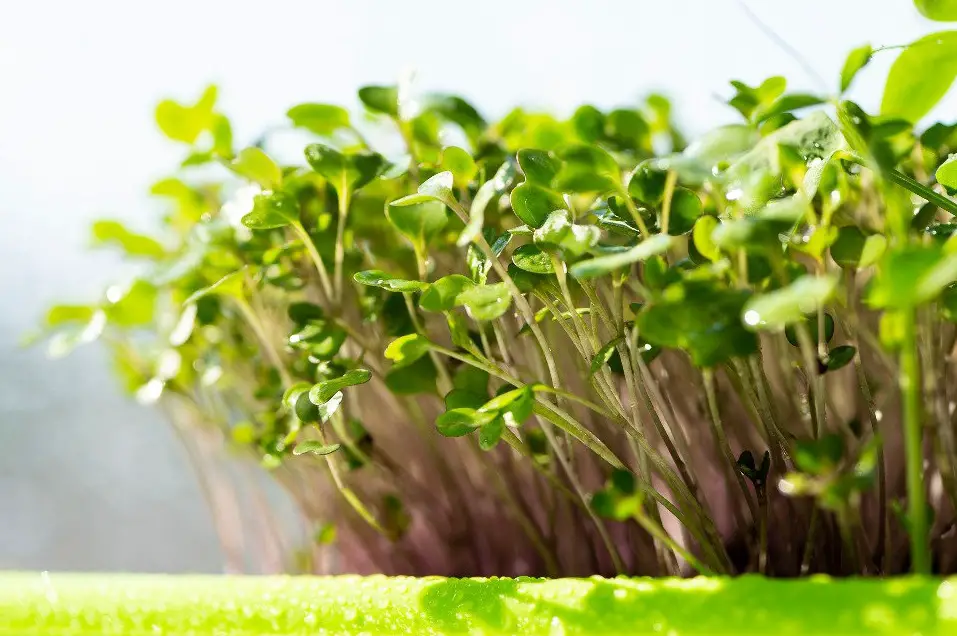
FAQ
Do you need special lights for microgreens?
For growing microgreens, supplemental lighting is not required but is recommended to achieve optimal growth and yield. Grow’s lights that emit a full spectrum of wavelengths can be used, while fluorescent or LED light are the most common choices.
It is important to ensure that the light is placed at the appropriate height above the microgreens, and the duration and intensity of the light should be adjusted according to the specific species of microgreens being grown.
Microgreens need proper lighting to flourish, especially since they are usually cultivated indoors without access to sunlight. LED grow lights can provide the necessary light spectrum to promote successful growth.
Appropriate microgreens lighting not only helps microgreens grow more quickly and robustly, but also enhances their flavor, appearance, and texture. By using suitable lighting, growers can consistently and dependably produce high-quality microgreens.
How do you light microgreens?
A grow light provides a blend of blue and red light wavelengths that are critical to plants’ growth and progression. Microgreens should be positioned approximately 3-6 inches beneath the light and switched on for 10-12 hours each day.
Depending on the microgreens’ variety and growth phase, the intensity and duration of the light may differ. The temperature of the room in which they are stored should always remain constant, between 64-75°F (18-24 °C).
How much light should microgreens get?
To maintain optimal growth, microgreens require approximately 10-12 hours of illumination per day, which can be obtained from either sunlight or artificial lighting such as growing light. It is imperative to prevent heat damage by placing the grow light at a safe distance of about 3-6 inches away from the top of the microgreens tray.
The proper growth of microgreens depends on a specific amount and type of light. LED grow lights are a preferred option for growing microgreens due to their emission of red and blue light, which supports the process of photosynthesis.
To prevent the burning of leaves, it’s crucial to maintain a suitable distance between the lights and the growing plants. An alternative option is to cultivate microgreens near a south-facing window to allow sunlight to reach them.
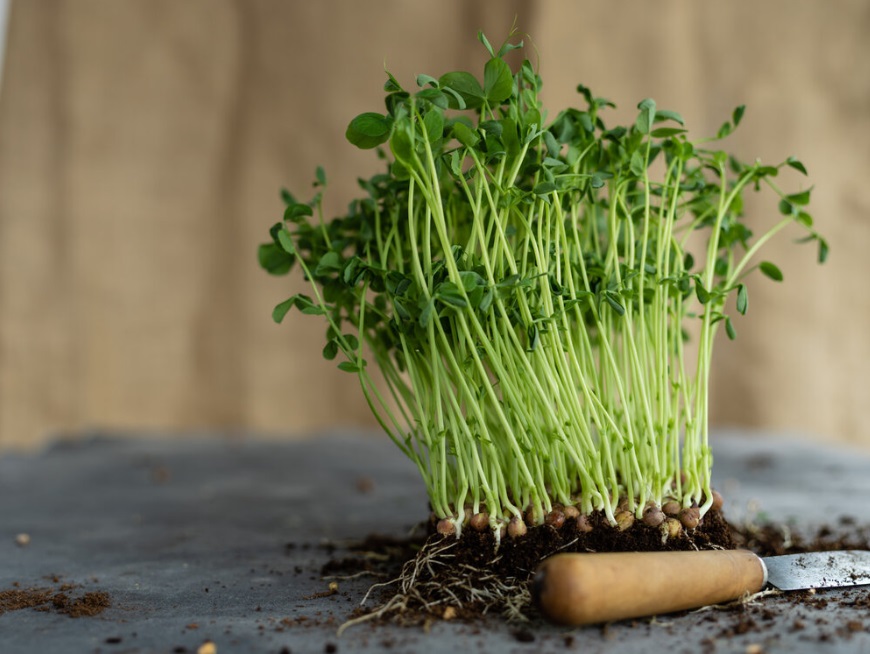
Conclusions
Summing up, we can say that high light intensity for microgreens is very important.
You can use different light spectrums, including neutral white light, fluorescent grow lights, and blue-white light.
Choose the right light, and connect it to grow microgreens and other interesting plants.
There are several sound reasons why properly cultivating microgreens can be advantageous.
The overall health advantages of microgreens stem from their high concentration of nutrients and antioxidants. To maximize their nutritional content, it is crucial to cultivate them using the proper methods.
Microgreens are both delicious and adaptable. They offer a diverse selection of flavors that can be incorporated into an array of meals, such as salads, sandwiches, and even blended drinks. Proper cultivation methods can heighten their taste and consistency, resulting in a more pleasant dining experience.

By cultivating microgreens at home using sustainable and organic techniques, you can promote environmental conservation and minimize waste. Additionally, this practice helps decrease your carbon footprint by eliminating the need to transport these products from distant locations.
Growing microgreens at home is a cost-effective alternative to purchasing them from a store or farmer’s market. Additionally, growing microgreens with proper techniques can guarantee optimal quality yields, maximizing your investment.
Growing microgreens can be an enjoyable and informative pursuit for individuals of all ages. Through proper cultivation techniques and microgreens lighting methods, you can impart knowledge regarding sustainable methods, dietary health, and cultivation to loved ones, while simultaneously reaping the satisfaction of harvesting your product.

